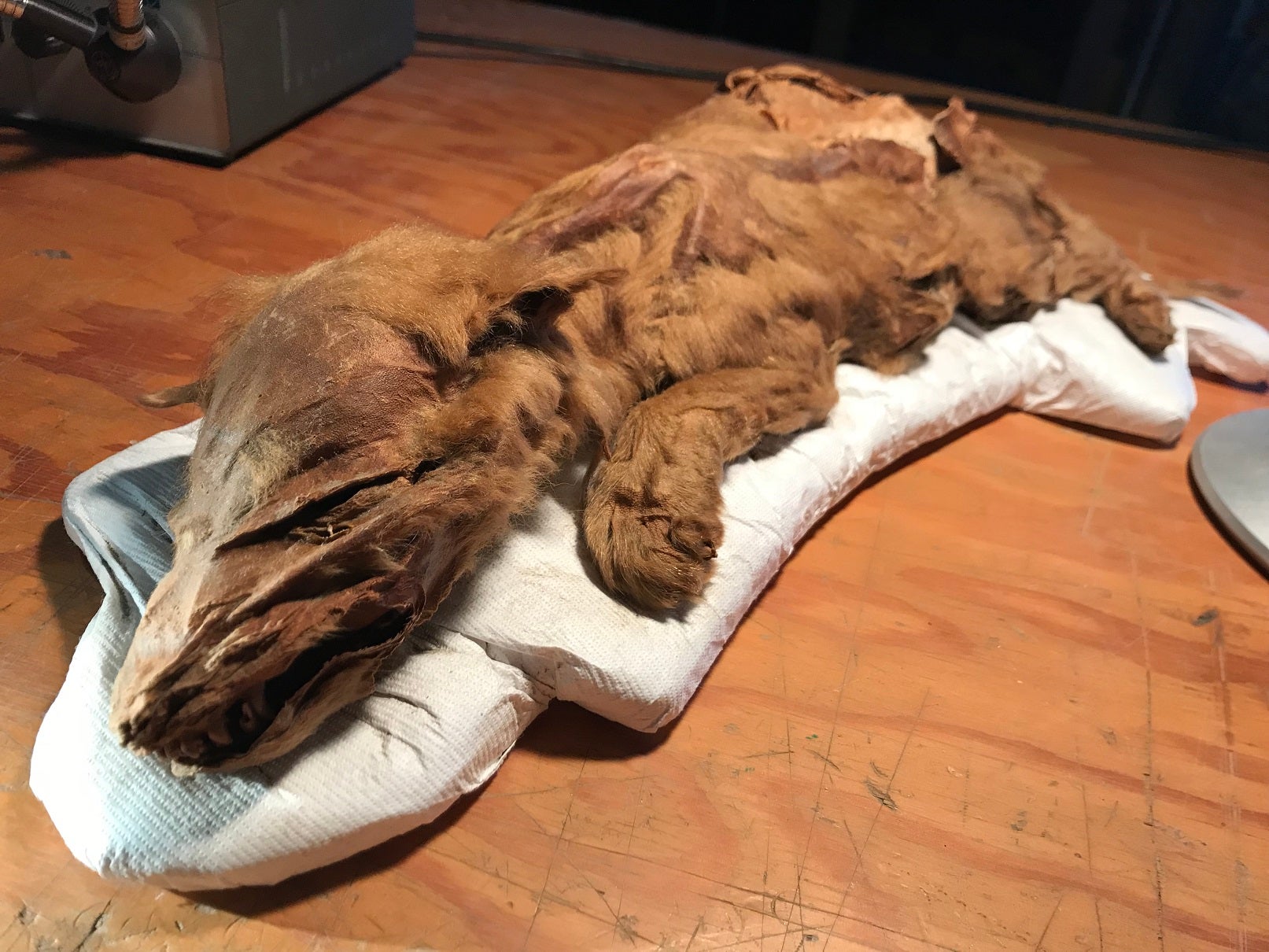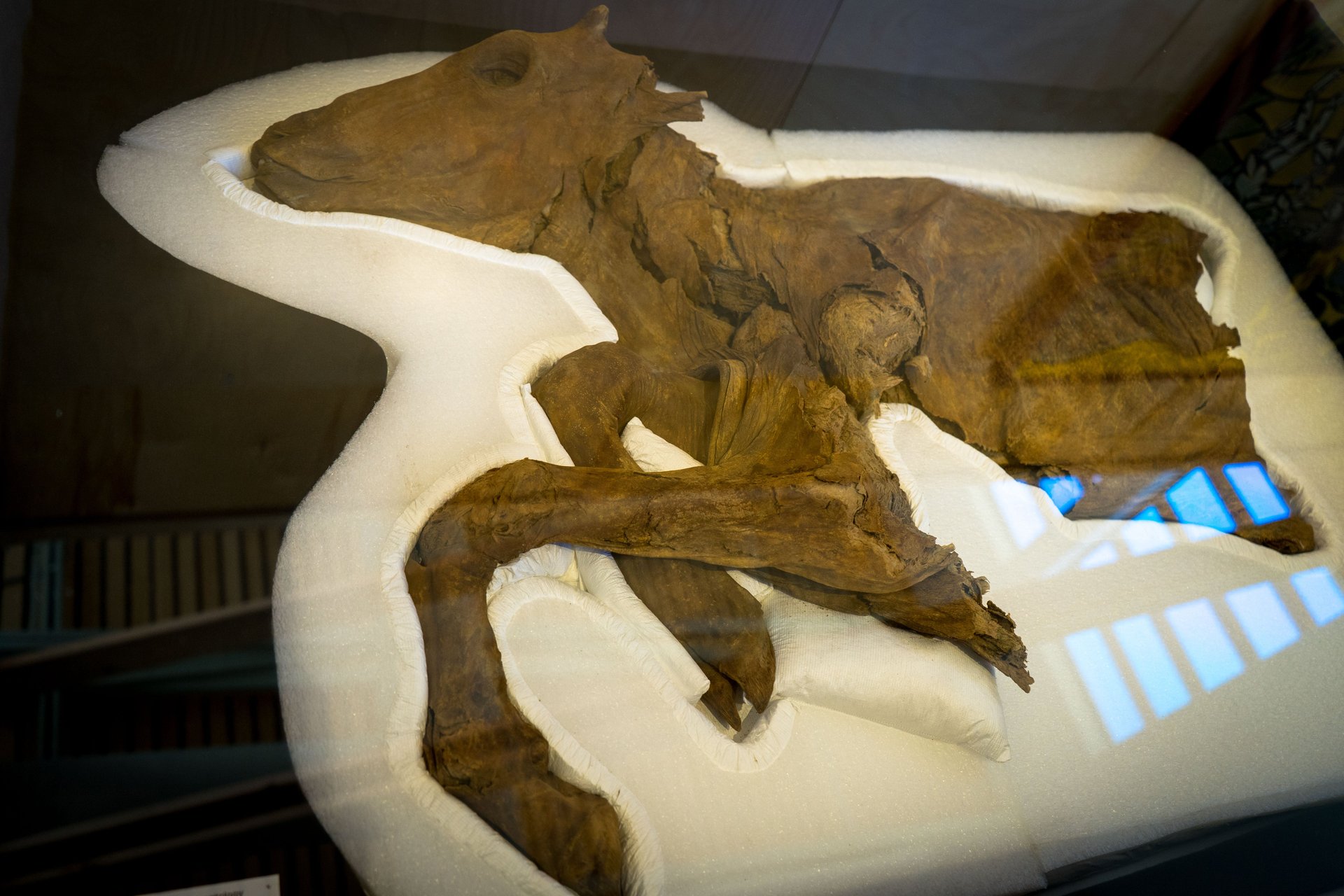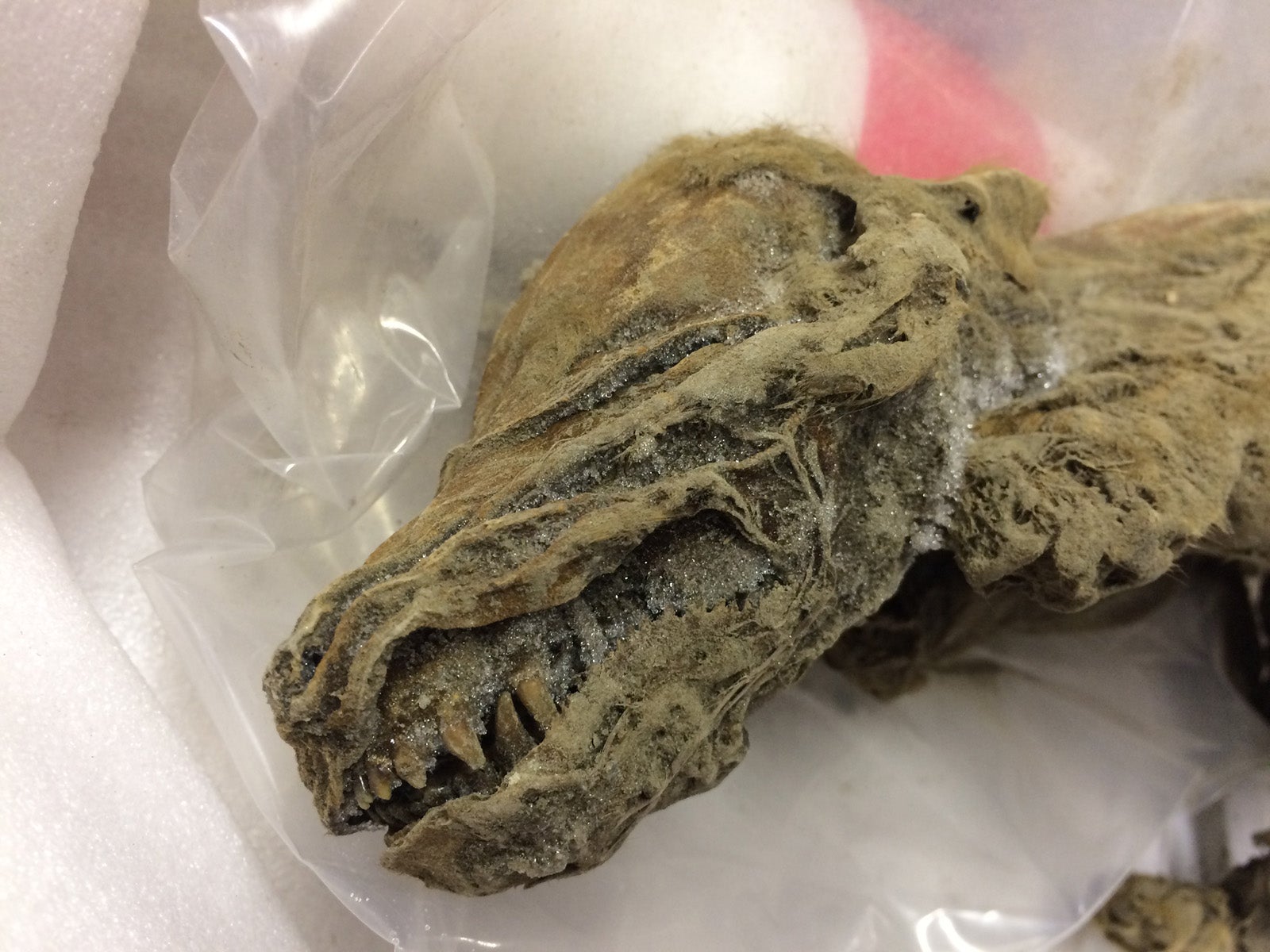This ancient ice-age wolf is pretty cute—for a mummy
We don’t normally think of mummies as particularly cuddly. But researchers say that a newly unveiled mummified body of an ice-age wolf, estimated to be over 50,000 years old, is so well-preserved that you might want to reach out and give it a pat.


We don’t normally think of mummies as particularly cuddly. But researchers say that a newly unveiled mummified body of an ice-age wolf, estimated to be over 50,000 years old, is so well-preserved that you might want to reach out and give it a pat.
Gold miners found the specimen, along with that of an ice-age caribou calf, in the Klondike region of Canada last year, according to a press release by the government of Yukon.

While only the head, torso, and two front limbs of the caribou were discovered intact, the wolf was found in its entirety. The pup, which is estimated to have died when it was eight weeks old, is the first mummified ice-age wolf to be found in the world. Both animals are believed to have lived alongside other ancient creatures such as woolly mammoths.
Elsa Panciroli, a palaeontologist at the University of Edinburgh, told The Guardian: “Ice age wolf bones are relatively common in the Yukon, but having an animal preserved with skin and fur is just exceptional – you just want to reach out and stroke it. It’s an evocative glimpse into the ice age world.”
Grant Zazula, a paleontologist working with the Yukon government, also admired the level of detail that was mummified. “It’s beautiful, the fur, it’s got the cute little paws and tail and the curled upper lip showing its teeth,” Zazula told the Canadian Press news agency.

The wolf mummy’s resemblance to puppies of today is one of the main reasons that the discovery is so remarkable. Thomas Higham, an expert in archaeological dating at the University of Oxford, told the Guardian, “The remains are highly evocative because they enable us to make almost face-to-face connection with animals that are tens of thousands of years old, and yet look much more recent.”
The mummy could also yield new insights about the wolf populations of yore in Yukon. Panciroli said that ancient DNA from the “pup-sicle” could lead to breakthroughs about how modern wolves evolved.